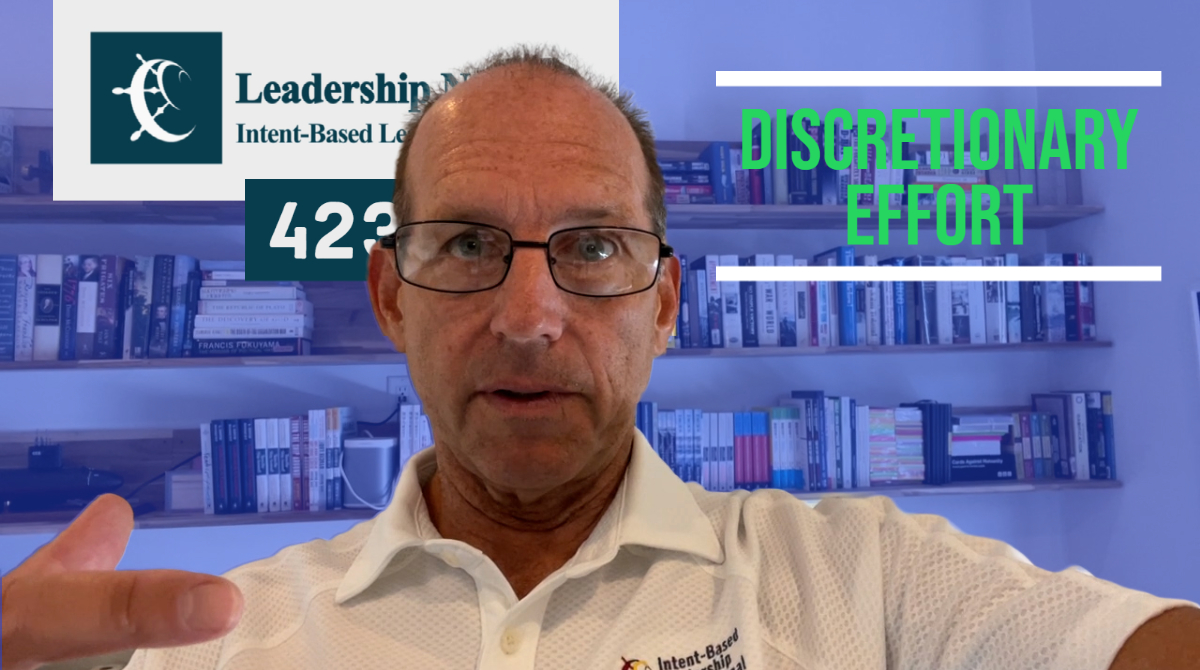Today, we introduce you to CMX Summit Speaker David Marquet. At CMX Summit East, he’ll speak about community-centric leadership. Whether you’re leading a community, managing a team, or starting a company, understanding how to lead is something we can all use in our day-to-day lives. We are thrilled to bring a nuanced view of community to the stage: community building from the eyes of a leader in the U.S. military, who has served his country for 28 years.
David Marquet is a former U.S. submarine commander with an amazing story of triumph in the U.S. Navy, which he shares in his bestselling book, Turn the Ship Around.
He’s one of the most well-respected voices in leadership in the United States.
He took command of the USS Santa Fe after graduating at the top of his class at the U.S. Naval Academy in 1981. The Santa Fe was the worst-performing submarine in the fleet. Over the next 28 years, he went from “worst to first” using intent-based leadership.
This is David’s central thesis of leadership: “If leaders are great, they embed that greatness in others.” This is exactly what we must all aspire to do in others if we hope to build long-standing organizations and businesses centered around people.
Leading up to his talk at CMX Summit East, we spoke with David about some of the most effective ways you can become an even stronger community leader. Are you doing these things to support your community or organization?
1. Spend time having conversations about intent.
“Spend a lot of time on the intent conversations. Talk with your members about what they want to accomplish and really listen.”
A lot of leaders can be tempted to set the vision without first making sure that their members are bought into the future of the organization.
“Don’t dictate the building blocks of your community,” David says. “Have conversations about them.”
2. Be tolerant of different approaches.
While having a shared intent (like a community mission statement) is vital to communities, there can be many ways of solving the problems you’re approaching. “Ask people, ‘What better world are we imagining together?’ David suggests.
But don’t be prescriptive about methods. This is where true leaders stand out. “Be tolerant of different approaches to get there.”
3. Help people come up with solutions on their own.
This is where tolerance is so important. “When people come to talk to you about something, do they come with a problem and not a solution? Do they come to you saying, ‘Tell me what to do’?
If so, this is a serious problem. They should be coming up with their own methods and approaches for solving problems, empowered by your leadership and their trust in you.
“Your members should understand the problem, your collective intention, and offer some solutions. The lack of that is unhealthy.”
4. Make thinking safe.
“The job of the leaders is to make it safe to think,” David explains. If people feel safe, they will come to you with creative solutions and you will embed some of your leadership into them.
“Communities are built by volunteers who choose to do their work for free. The rules for building a community are the opposite of those in old-fashioned organizations. Instead of telling people what to do, spend time talking about intent.”
5. Clarify common language – together.
6. Define roles and processes.
Another thing that creates chaos in communities? A lack of defined roles, authority, and processes. You must define these. Again, this should start as a conversation and then flow into set definitions, strengthened through collaboration and buy-in.
“Once you have those in place, that’s the structure that then allows for freedom. It’s kind of paradoxical.”
7. Coercion does not work.
“You can bark a bunch of very smart orders to get short-term wins. That’s probably easier than my way, which is about giving control in a very controlled way. It will sate your appetite better as a leader. It’s always faster.”
But you won’t get the long-term wins you hope for if you’re hoping to coerce people into doing good work. This creates short-term wins at the cost of long-term success.
8. Instead, set a culture of transparency, open feedback, and sharing. The rest will come naturally.
David says that all great leaders get their members to open up using three key tactics.
- Being transparent
- Inviting criticism
- Sharing
9. Make sure people feel part of a collective “we” rather than a distant “they”.
David explains that one of the best litmus tests he uses to check for the health of an organization is to listen to the pronouns people use when describing other teams, colleagues, and their bosses. If people say “they” instead of “we”, you’re in trouble.
Start listening: “What is the pronoun your members use to refer to each other? If it’s ‘they,’ that’s unhealthy. It’s always either ‘we’ or ‘they.’ There’s no in-between,” explains David. Next time you talk to a community member or employee, watch what pronoun they use to describe people in the rest of the organization.
Once you begin to establish a common culture and put the rest of these tips into action, you’ll notice these pronouns changing naturally.
10. Don’t sacrifice long-term success for short-term wins.
Investing in long-term success is not easy. You have to expect to lose some ground while you put in the foundations. “All time is production time or production capability time. There will be a temporary setback.”
What David touts as the paramount achievement of his intent-based leadership is the long-run subsequent leadership of his commanders. “The most important win is what happened three, five, seven years down the road. Ten years after my work was done, 10 officers were selected to be commanding officers. The anomaly should have been three leaders who made it to the top after that. That would have been remarkable. But we had ten.”
“The desire to be good crowds out the ability to be better,” David explains.
Don’t miss out on David Marquet’s talk in person on May 19. Get your ticket to CMX Summit!
Carrie Melissa Jones | @caremjo
Carrie is the editorial director of CMX Media. She has built community at Chegg and Scribd and has consulted with community companies around the world. She lives in Seattle with her pup, Bruce Wayne. Reach out with any questions relating to content, workshops, online courses at carrie@cmxhub.com.











